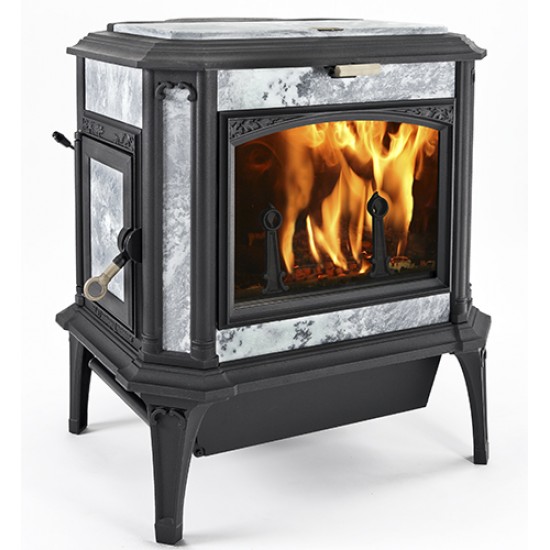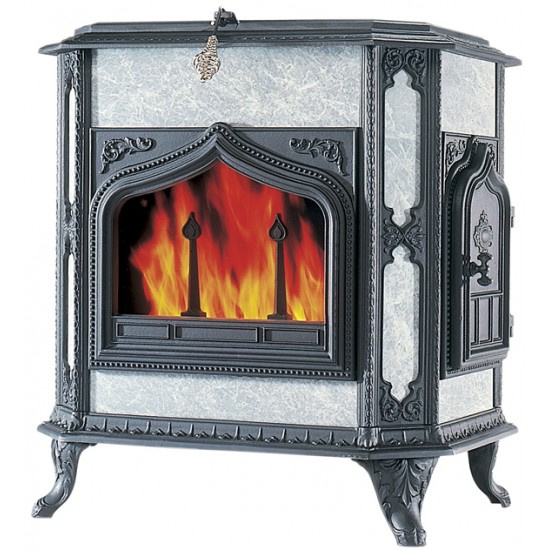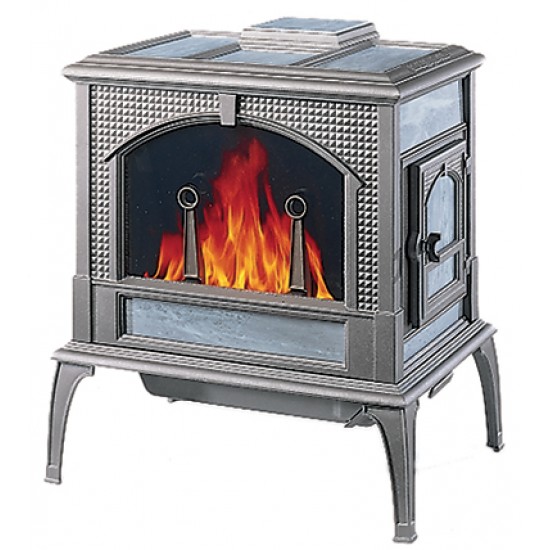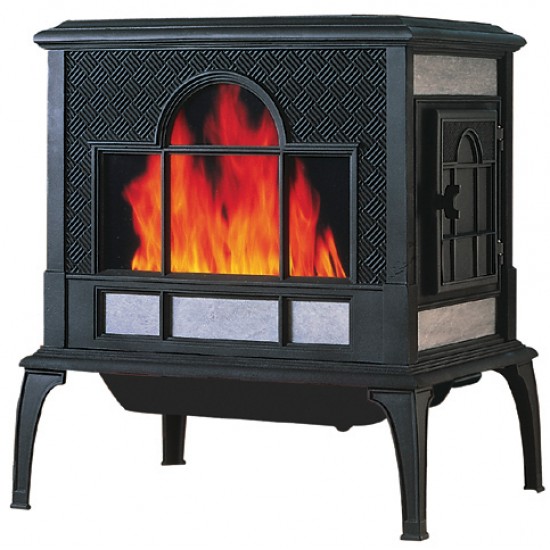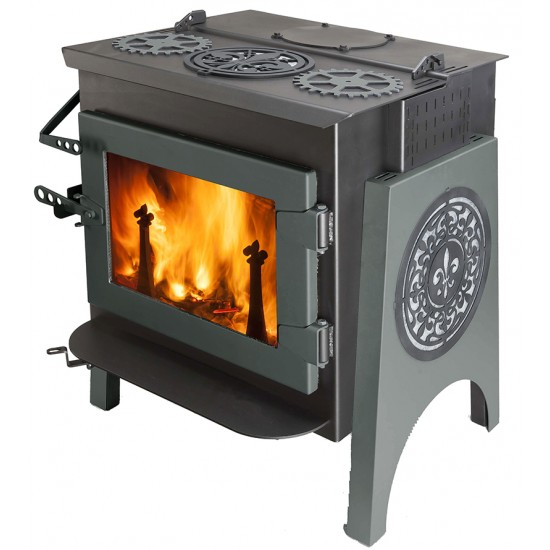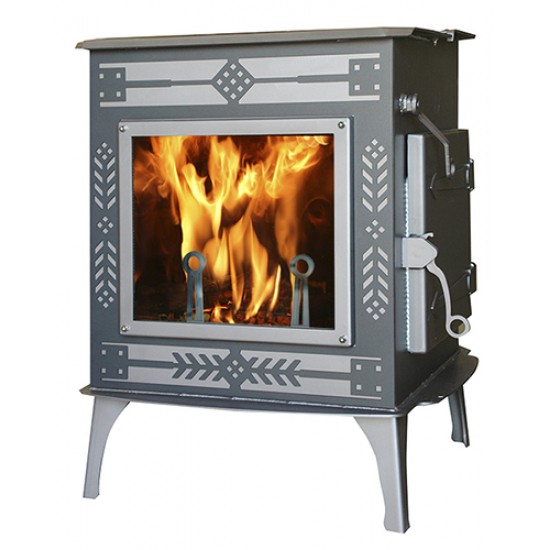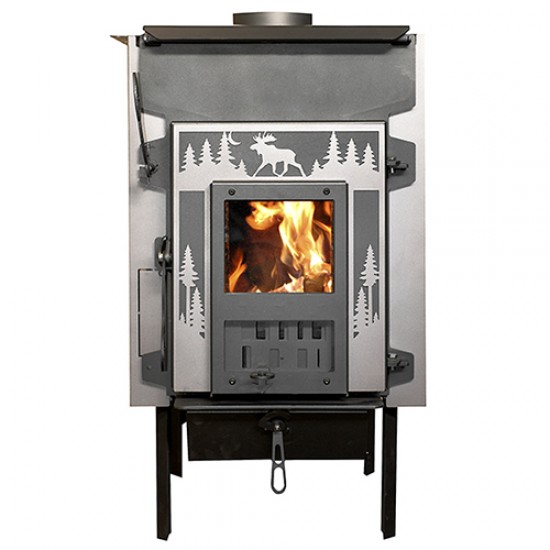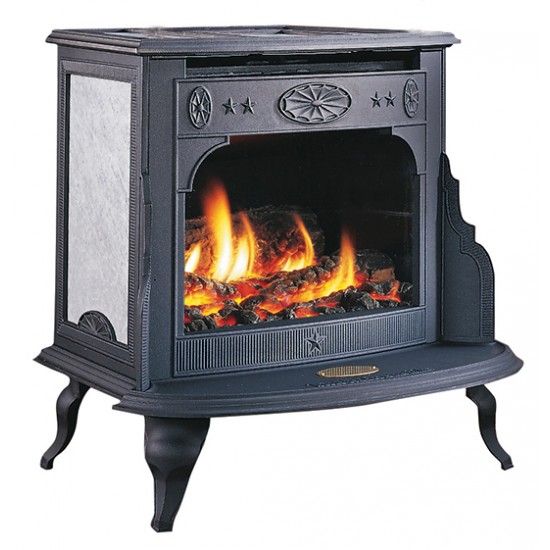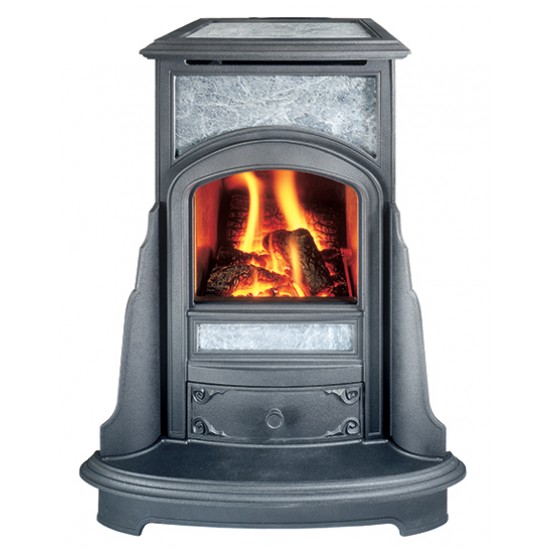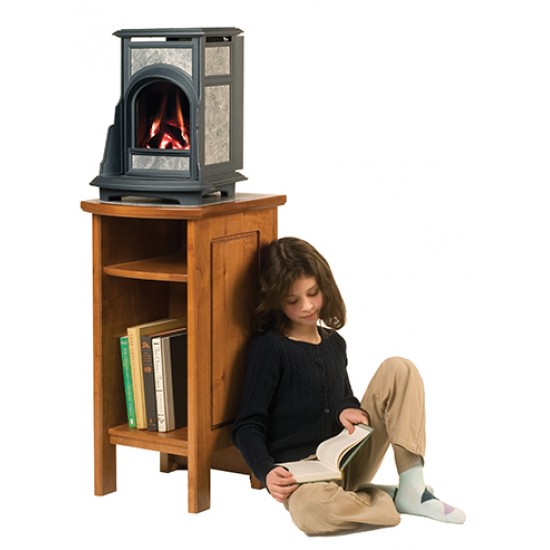
The Ideal Steel Hybrid has the highest efficiency of over 700 stoves
tested to EPA standards, and a low 1.0 gm/hr emissions. But the news
just gets better. When you burn cordwood in the Ideal Steel Hybrid, the
efficiency is just as high, but the emissions are even lower.
All non-catalytic stoves have emissions with cordwood that are worse
than EPA results. Only catalytic and hybrid stoves perform better with
cordwood.
The EPA tests are conducted with “dimension lumber” (Douglas Fir 2x4s
and 4x4s) in an attempt to keep the fuel the same from one stove to the
next during testing. Now the EPA wants to test using cordwood to get a
better idea of how stoves perform in the “real world”. Virtually all
non-catalytic stoves perform much worse (higher emissions) in the “real
world,” but when our catalytic and hybrid stoves are tested using
cordwood (i.e. “real world fuel”), emissions go down rather than up. We
have confirmed this in our own lab, as well as through testing by an
independent lab.
This puts us in an unusual position. The woodstove industry keeps
telling EPA that woodstoves just can’t burn cordwood cleanly. But our
experience is just the opposite. We get low emissions whether we use
EPA test wood or “real world” cordwood.
Low emissions regardless of what type of wood you burn
There are many reasons that catalytic and hybrid stoves perform better
in the “real world”. One reason is that newer catalysts are made of
stainless steel foil that is only 50 microns thick (about the same
thickness as a human hair). The thin foil heats up quickly and begins
to clean up the exhaust almost as soon as the fire is kindled - long
before secondary combustion can be established. This is important,
because cordwood doesn’t burn as fast, or as hot, as the dimension
lumber that EPA uses to test stoves. In the “real world,” stoves need
to burn cleanly at low temperatures, something at which only catalytic
stoves are adept.
 |
Advanced combustion design and heat transfer engineering
Our hybrid stoves were the first stoves to use both secondary combustion
and a foil catalytic combustor. The stove adjusts between the two
systems automatically, and is simple to operate. Our high efficiency
ratings are not an accident. We direct the heat from our hybrid stove
catalysts at the front of the stove, where more heat is usually desired.
We capture the extra heat from the firebox, secondary combustion and
catalyst before it starts to go up the chimney. We have designed
high-temperature cooktops in our hybrid stoves so you can use the extra
heat. We were the first company to use a radiator to distribute
catalyst heat to the sides of the stove.
What this means is that if you use a catalytic stove or a hybrid stove,
you will either get more heat or burn less wood. The effect of
increased efficiency can be eye opening, as the chart below shows. Most
people burn their woodstoves at the rate of 1.0-1.5 kg/hr (outlined in
yellow). The improved efficiency of a hybrid stove can mean up to
131,000 BTUs/day more heat than with a less efficient non-catalytic
stove (566,222 BTU/day at 82% efficiency - 435,000 BTU/day at 63%
efficiency = 131,222 BTU Additional per day).
 |
Catalytic and hybrid stoves are the cleanest burning cordwood stoves in
America. They also produce more heat for every pound of wood that you
burn.

